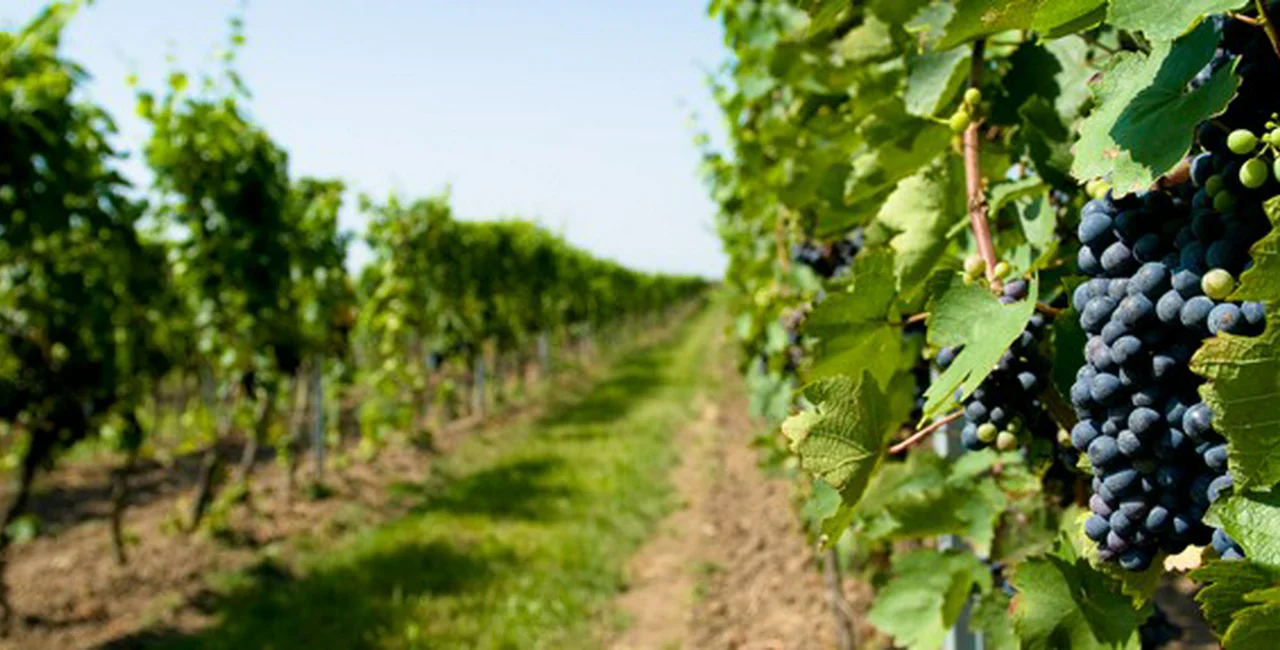Rightly revered for its beer, the Czech Republic’s status as a producer of top class wines is often overlooked.
Autumn is the ideal time of year to explore the vineyards and wine cellars of Southern Moravia, the country’s primary viticulture region. Time your trip to coincide with the grape harvest, and you can join the locals as they sample the first bouquet in vast quantities in their wine caves.
Wind your way through the countryside on two wheels or four and savour the unique flavour of Czech wine – but do remember that the country’s drunk driving laws are some of the strictest in Europe!
Where to go
The vast majority of Czech wines are produced in Moravia along the Austrian border: 96% of the Czech Republic’s registered vineyards are located there. Bohemian wine does exist too, though: the areas surrounding Mělník, Litoměřice, and even Most produce modest amounts.
The most obvious destination for the would-be Moravian wine tourist has to be Mikulov. The town is picture postcard perfect enough to merit a visit in its own right but also rather conveniently happens to be slap bang in the middle of the country’s main wine producing region. Having hiked up the hill to the fairytale chateau which dominates the skyline, and wandered around the winding streets below, you can reward yourself by sampling the local víno.
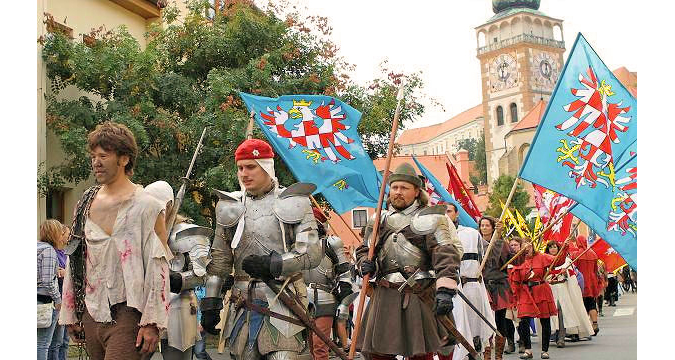
Vinné sklepy, aka wine cellars, are where the tasting action is at. There’s certainly no shortage of these, but you’ll need to book if you want to do a degustation where you sample a range of varieties – and let’s face it, who wouldn’t? Many wine cellars require a minimum of ten people in a group to make a reservation. Volařík Winery is one place which will arrange tastings for smaller groups.
Znojmo, the self-styled pearl of Moravia, is famous amongst Czechs for its gherkins: there’s even a festival in honour of the humble pickled cucumber. They also produce some outstanding wines. Head to Nový Šaldorf, a hamlet on the outskirts of town, where you’ll find dozens of local vintners waiting to welcome you to their sklípky. The vibe here is laidback: during our recent visit on a Saturday afternoon we sat outside with a bottle of Neuburské, a medium dry white which set us back a very reasonable 120 CZK, and snacked on a plate of home cured ham, bread, and of course, those gherkins.
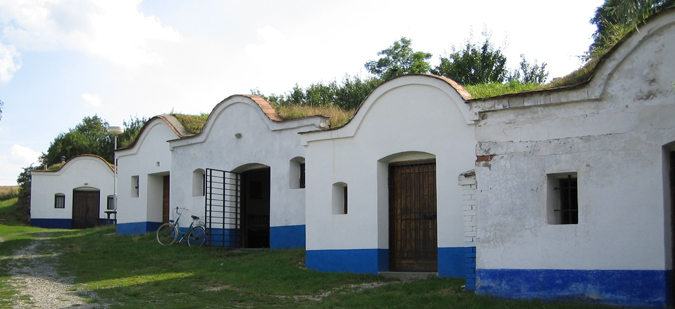
The Velké Pavlovice wine region describes itself as the beating heart of Moravian red. Follow in the footsteps of the Knights Templar and take a trip to the underground wine cellars beneath the fortress in Čejkovice, which date from the 13th century. Rather unusually, they even produce sparkling wines and also have an organic range.
Alternatively, head for Slovácko, the most easterly Moravian wine producing area, where Riesling, Pinot Blanc, and Pinot Gris grape varieties all excel. In Uherské Hradiště, check out the Mařatice area where most of the wine cellars are to be found, including some dating back to the eighteenth century.
One way to explore the region – and keep up your stamina levels required for all the drinking you’ll be doing – is to cycle. The main Moravian wine trail meanders from Znojmo to Uherské Hradiště, but of course you’re under no obligation to cover it all: check out some of the suggested routes at Cycling Southern Moravia or The Friends of Czech Greenways websites.
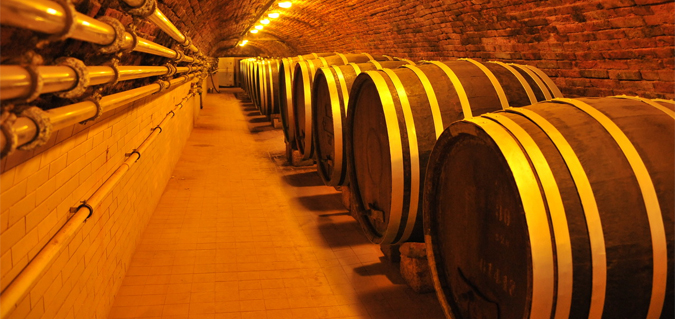
The most popular varieties
The vast majority of Czech wine is white: apparently the higher lime content in the soil and the warm climate lend themselves better to cultivating a Pinot Gris than a Beaujolais. The most popular varieties include Grüner Veltliner (Veltlínské zelené), Rhine Riesling (Ryzlink rýnský), Pinot Blanc (Rulandské bílé), and Müller Thurgau.
There are decent reds too: try Pinot Noir (Rulandské modré) if it’s something velvety and full-bodied you’re after, Lemberger (Frankovka) if you want a tipple with a fruity bouquet of overripe cherries, or for something lighter, road test a Portugiser Blauer (Modrý Portugal).
There’s also burčák, or partially fermented young wine, a slightly sweet alcoholic beverage made from must – which sounds like what it is – a mush of grapes and their juices. Nicknamed mléko starců (old man’s milk), it comes in both red and white just like its fully fermented big brother. Watch out: it tastes like a soft drink but the 5 – 8% alcohol content can sneak up on you.
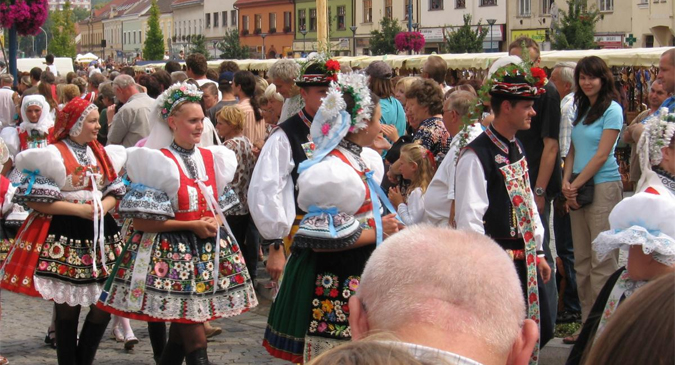
Vinobraní – the wine harvest festivals
Every year, the successful harvesting of another grape crop provides the perfect excuse for collective celebration. During the vinobraní, or wine harvest festival, towns and villages across Southern Moravia burst into life with street performances of all kinds and, of course, the sampling of the latest crop in copious amounts. This year’s Pálavské vinobraní in Mikulov took place from 7th – 9th September. Znojmo welcomes visitors for its historical vintage festival, including a medieval style torch lit procession through the town, fireworks and a brass band, next weekend: 14th – 15th September.
A crash course in Czech for wine lovers
suché – dry
polosuché – semi-dry
polosladké – semi-sweet
sladké – sweet
Víno bez původu – table wine. The lowest category of wine and cannot bear a vintage, grape variety or any indication of its geographical origin.
Zemské víno – country wine. This is still table wine, but it’s one step up from the truly nasty stuff. It can bear the name of the wine region, vintage and grape variety from which it was produced.
Jakostní víno s přívlastkem – Quality wine with special attributes. This is what it reassuringly states on the bottles I brought home from my recent trip to Moravia. The wine can only be produced from a maximum of three different varieties of grapes and the quality must be assured by the State Agricultural & Food Inspectorate SZPI. Within this category, there are also:
Ledové víno – Ice wine. A super sweet (and expensive) dessert wine produced from grapes frozen on the vine.
Slámové víno – Straw wine/raisin wine. Wine made from grapes that have been dried to concentrate their juices. Straw wines are typically very sweet and of the finest quality; the fictional serial killer Hannibal Lector supposedly sipped a glass while dining on the liver of one of his victims! (Note: the film version turned this into a Chianti.)
Do say:
Nejsem Pražák, jsem cizinec a tady na Moravě se mi strašně líbí.
I’m not from Prague, I’m a foreigner, and I really love it here in Moravia.
Don’t say:
Jsem tady,abych pil pivo.
I’m only here for the beer.
Do you have any tips for making the most of Moravian wine country you’d like to share? Know of any great vinné sklepy or wine harvest festivals we’ve missed? Let us know in the comments section!
Related articles
- 10 Travel Articles That’ll Get You Excited for Autumn In the Czech Republic
- VIDEO: Amazing Recreation of 14th-Century Construction of Charles Bridge
- Prague Is the Cheapest City In Europe for Ballet, Opera, Art
- Český Krumlov Mulls Over Charging Tourists a Toll
- New Travel Guide Puts Czech Monasteries On the Map












 Reading time: 5 minutes
Reading time: 5 minutes 